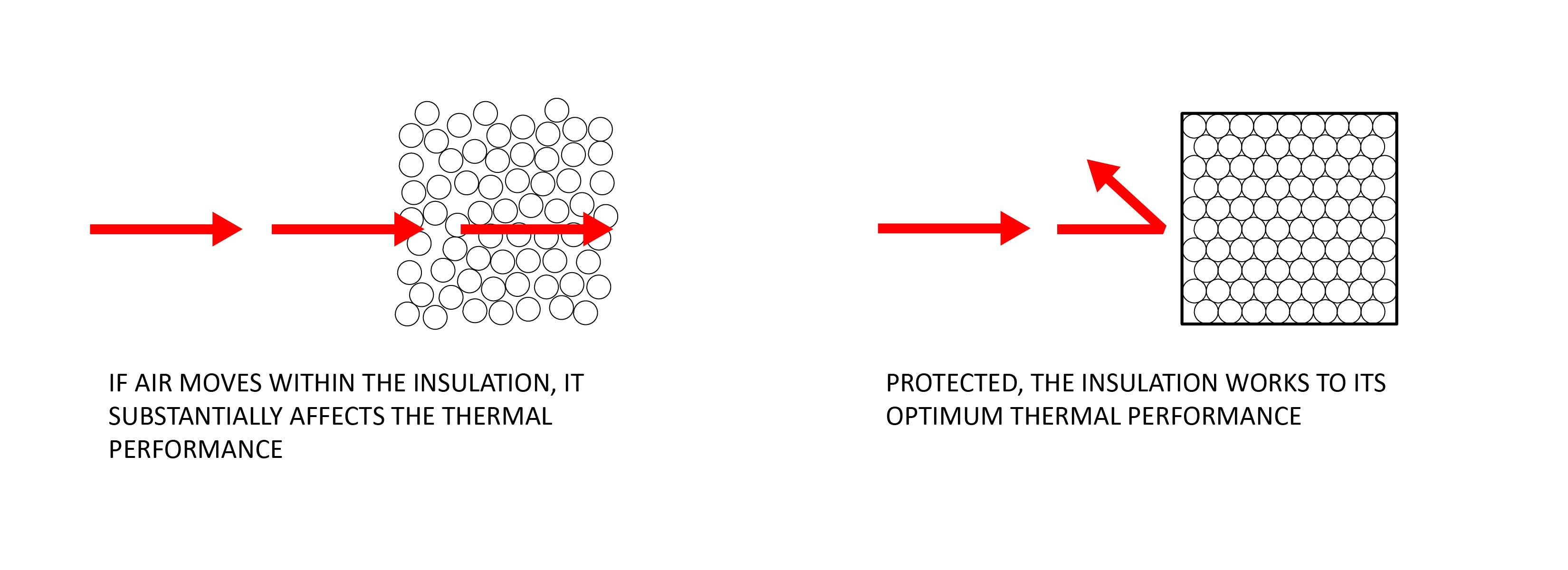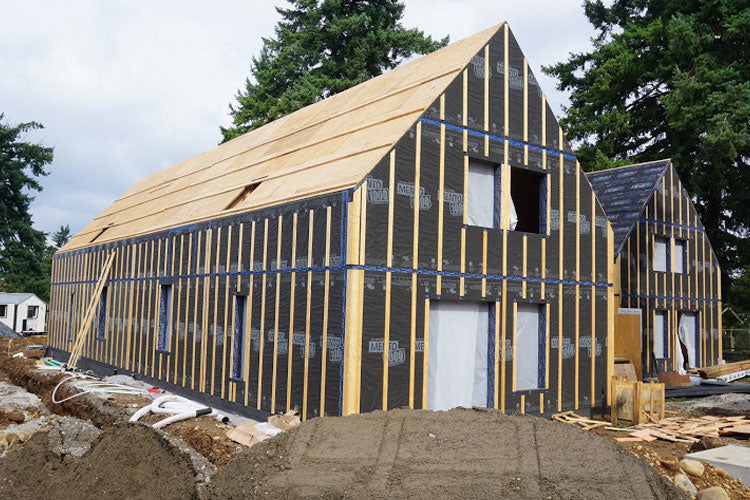When looking for the essential nature of construction, the architect Louis Kahn famously said: 'What do you want, brick?' Today, in looking at the nature of high-performance building enclosures, we re-imagine the conversation:
You say to the building’s exterior, 'What do you want, high performance enclosure?' And it says to you, 'I like a vented rainscreen.' And you say, 'Look, that sounds nice, but won’t that cost more? And don’t I need added protection for insects? What do you say to that, high performance enclosure?” The enclosure replies 'I like a vented rainscreen, all across North America.'
According to Green Built Alliance, rainscreens are "one of the best ways to increase durability and prevent water damage to our homes and buildings. Bulk water leaks is #1 on our list of the Top 3 ways water destroys our homes and buildings." Additionally, rainscreens also "[protect and extend] the life of siding/exterior cladding and their finishes (paint or stain). This reduces maintenance and could be more important than the quality of the finish."
Four Key Benefits of a Rainscreen:
1. Keep Rain off Waterproofing Membrane
Among the foundational elements of high performance enclosures, job number one is to keep the water out. A rainscreen, along with a high-resistance membrane such as ProClima’s SOLITEX Mento or ADHERO, does this beautifully. The “sacrificial” rainscreen cladding (wood siding, steel, or man-made) on the exterior protects the wall and the exterior air barrier / water resistant membrane (WRB) from the toughest elements of nature. Sheltered by the rainscreen, which serves as a pressure equalized plane, the WRB can shed any residual water effectively under much less stress.
To play this role, we recommend the SOLITEX Family of WRBs by Pro Clima. Their TEEE monolithic material combines unmatched airtightness with best in class waterproofing - providing actively vapour open protection of your assemblies. Connected to window and door frames with CONTEGA SOLIDO IQ adhesive tape, a complete waterproof, airtight, and vapour-open WRB can be realized.
The SOLITEX Family of WRBs meets ORNL research suggestions, "in order for the air cavity to be able to dry out, the materials exposed to the air cavity must be capable of transporting moisture from the surrounding materials. This means that wet materials should have higher permeability the closer they are to the ventilated cavity."
2. Keep Sun off Water Resistant Membrane
Next in importance is moisture/vapour control. A rainscreen is a huge asset in addressing solar diffusion and vapour drive. Shaded by the rainscreen, the membrane is not exposed to direct radiation and solar heat. The rainscreen cladding is also able to dry quickly after a rainfall.
By minimizing both the rain water and direct UV radiation on the SOLITEX WRB, the WRB can have a service life that will exceed the service life of most wood rainscreen sidings (20-50 years, contingent on location, wood used, etc.). As a result, the siding can be replaced on an as-needed basis while the WRB can remain in place for one or more cycles.
3. Provide Optimum Drying Potential of Enclosure in Cold Weather
A vented rainscreen maximizes the walls' outward drying potential, removing moisture faster than it can enter the building assembly. For this to happen, we first want to make sure that the exterior is as vapour open as possible, which will allow the wall to dry outwards in the winter. As noted above, SOLITEX Mento and Fronta Quattro have a vapour permeance of 38 US perms. Furthermore, since they are actively vapour open, unlike conventional WRBs, they provide maximum outward drying potential in the cold season while remaining completely windtight and waterproof.
With fibrous insulation batts or blown-in cellulose/woodfiber between the studs and an interior smart vapour retarder system like INTELLO, a wall with any desired R-value is readily achieved. This wall design eliminates the need for foam and protects the interior spaces and the enclosure assembly from unhealthy elements such as drafts, air-pollution, smoke, rot, and mold.
Building Science Corporation notes "rainscreen gaps help walls manage moisture. A rainscreen gap helps to dry the sheathing, which may accumulate moisture during cold weather. It also helps to dry the siding when it is soaked by rain....The gap provides a capillary break between the back of the siding and the WRB. This limits wicking. The gap allows moisture held in the siding and sheathing to be redistributed to adjacent materials, by evapouration and diffusion, thereby limiting damage due to water that concentrates at leak points."
4. Maximize Performance and Life Expectancy of Waterproofing and Wind/Air Barrier
Finally, a rainscreen provides physical protection from brute force actions. Protected from physical abuse, the water, air and thermal control layers can perform optimally for maximum life expectancy.
Putting it All Together
Using a Solitex WRB behind a vented rainscreen provides a wind- and air-tight layer, and protects the insulation. Wind-washing of insulation, especially at corners, can reduce the insulating properties of materials by nearly a factor of 5. With the exterior nice and airtight, we also recommend, that to optimize for maximum thermal performance, an interior air barrier should be the primary air barrier - best done with a smart vapour retarder (INTELLO Plus or INTELLO X) on the warm side of the insulation.

7 out of 8 Smart Enclosure guides include vented rainscreens, and are available for download: Wood Retrofit, 2x, Double-Stud, I-Joist, Metal Frame, Mass Timber and the noted exemption: Masonry Retrofit.
Finally, in this video hear Homeowner / Builder Everett Kramer concisely demonstrate the benefits of the rainscreen being applied over the ADHERO self-adhered membrane that wraps his high performance home:















